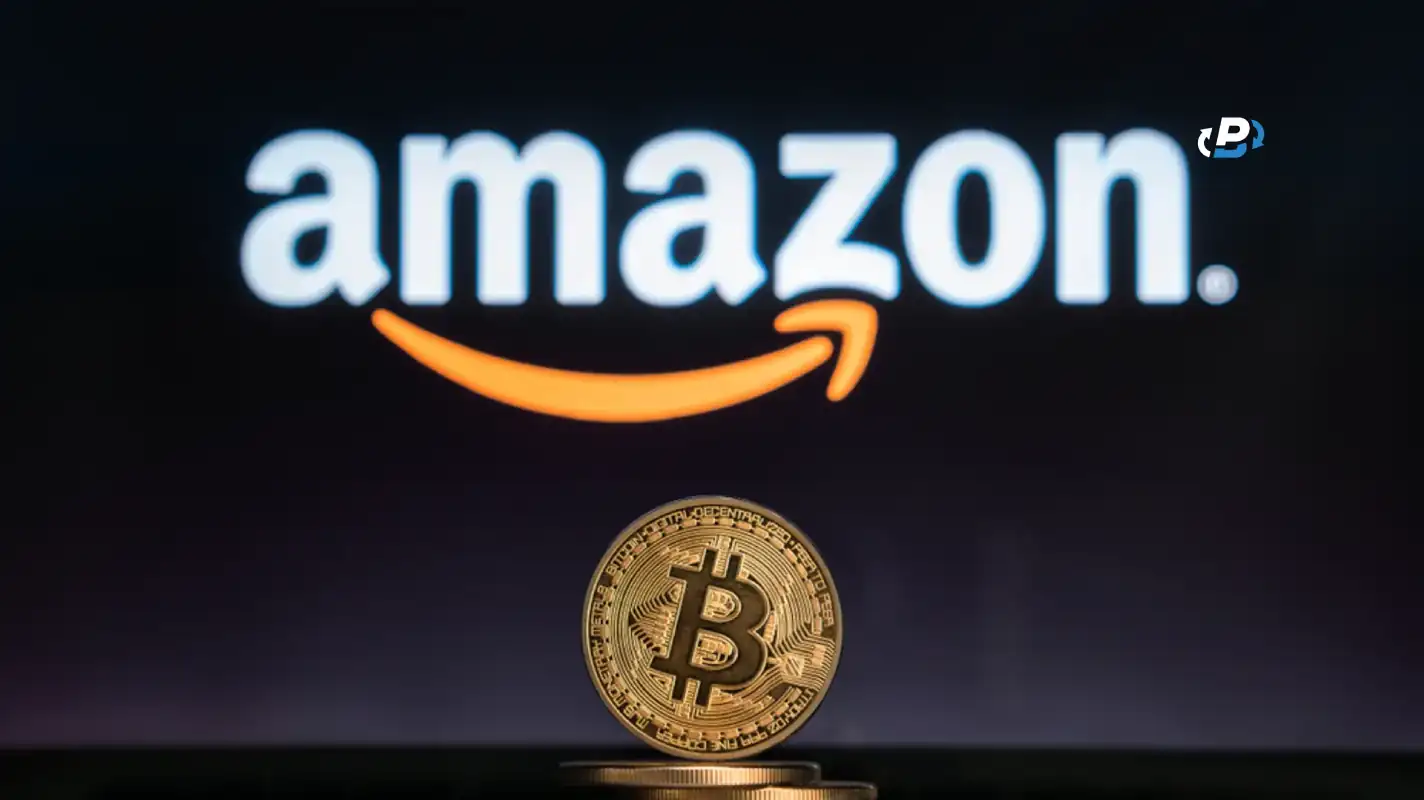Amazon is a multinational technology company that started as an online bookstore and has since evolved into one of the largest online retailers globally, often referred to as "The Everything Store" due to its vast product offerings. Also, it has become more than an e-commerce platform, it also specialises in cloud computing, digital streaming, and artificial intelligence.
At the time of writing this article, Amazon does not accept payment in cryptocurrencies. Nevertheless, we can show you how to pay for Amazon using crypto: go to your wallet and deposit crypto, then order a crypto card from the ‘Cards’ section, load it using the funds you have deposited, and enter your new card details as your payment method on Amazon.
Even if you're not paying directly with crypto, paying with a card topped up with crypto is your best solution until Amazon accepts cryptocurrencies. In this article we’ll show you how to acquire a virtual card topped up with crypto and enter its details as payment type in your Amazon account. We also discuss in more generic terms the relationship between Amazon and Crypto,
How to pay for Amazon using crypto
This section gives a step-by-step guide on how to pay for Amazon using crypto. Once you have acquired a card, we show you how to insert its details on Amazon.
How to acquire a Plasbit virtual card
Step 1 – Go to the wallet section.
Login To Your Plasbit Dashboard and Go to the wallet section.

Step 2 – deposit your preferred cryptocurrency.
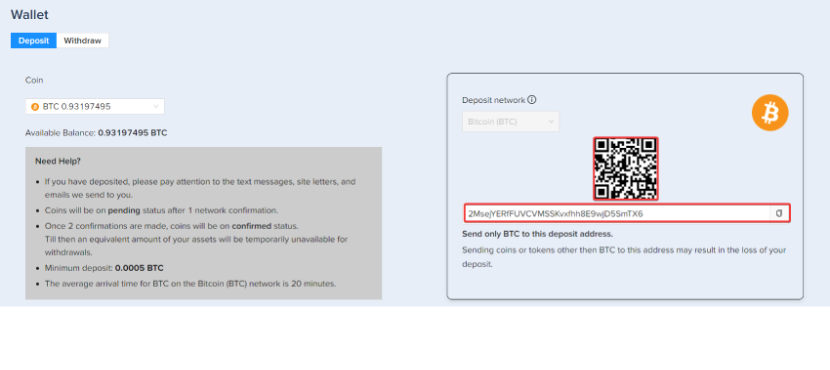
Step 3 –The Card Section
Go back to your Dashboard and click on 'Cards'. Select the Virtual card in your preferred currency, USD or EUR, and click "Get This Card."

Step 4 - Choose a payment wallet
Choose the wallet you want to use to pay for the card, accept the terms and conditions, and click Submit.
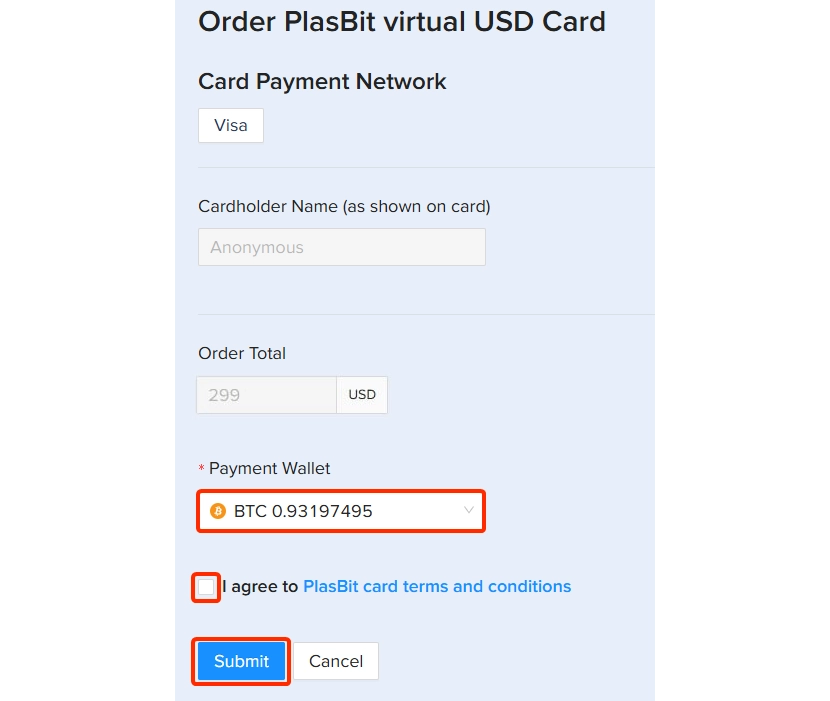
Step 5 – Wait For The Card Confirmation
Once your virtual card has been successfully issued, you will receive a notification via email.
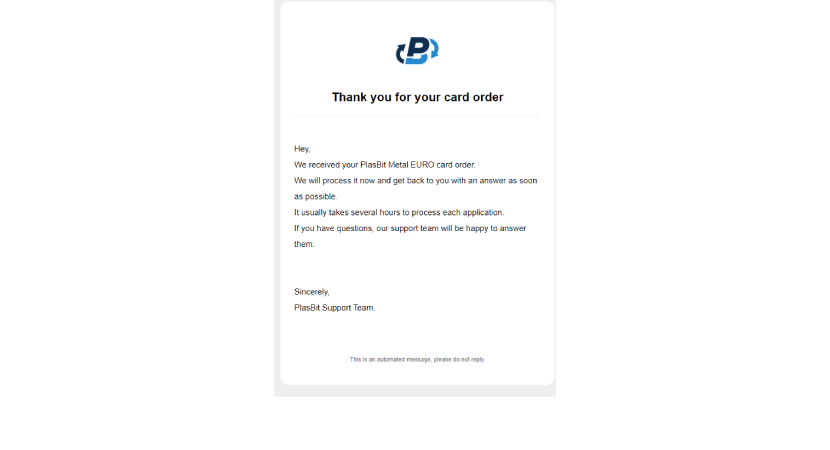
Step 6 – Load Funds Onto The Card
Revisit the "Cards" section and click the "Open Details" button. Navigate to the "Funding" tab and choose from which wallet you wish to deposit funds, then press the "Load" button and press "Submit" once you check the amount is correct.
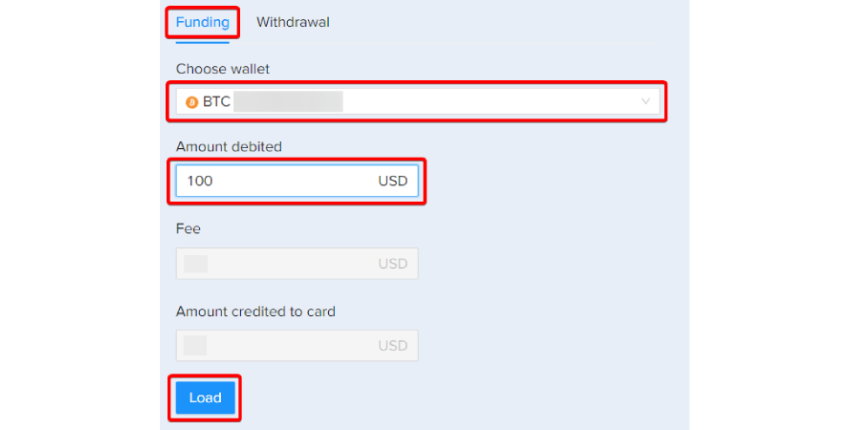
Step 7 – Get Your PlasBit Card Details
You can access the card details and get your card number, expiry date, and CVV by pressing the "View Card Details" button.
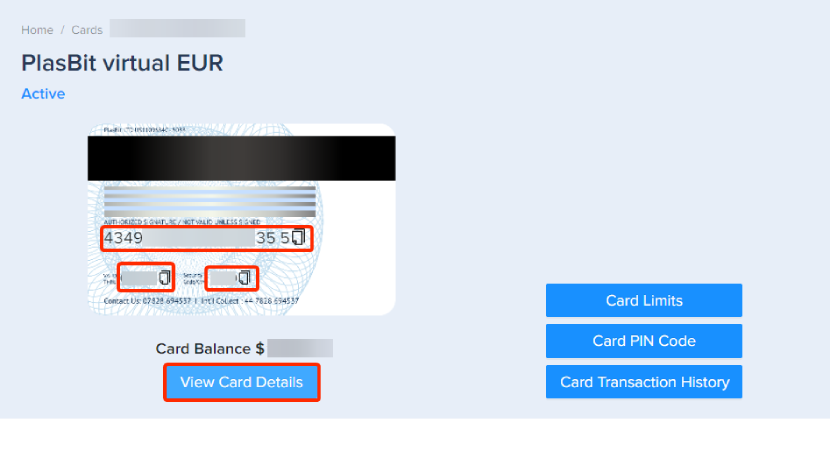
Provide an additional guide on how to insert your card details on Amazon
Step 1 - Login and go to the main menu
Go to Amazon's Website, sign in, and go to the main menu
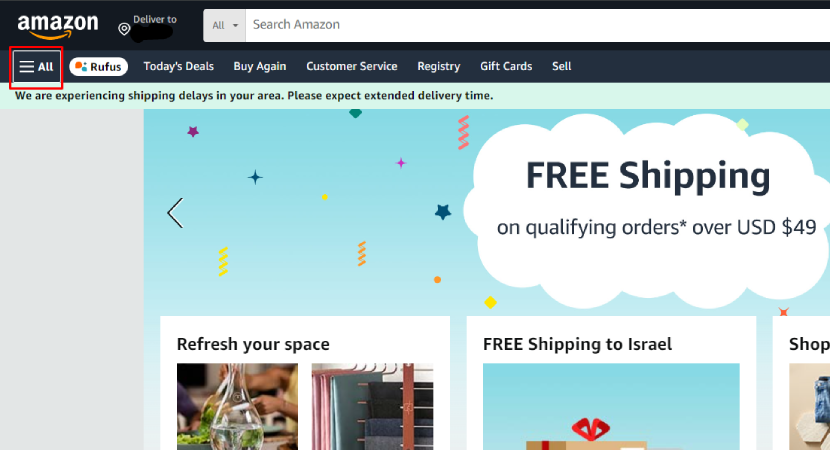
Step 2 - Navigate to your account.

Step 3 - Click on your payments.
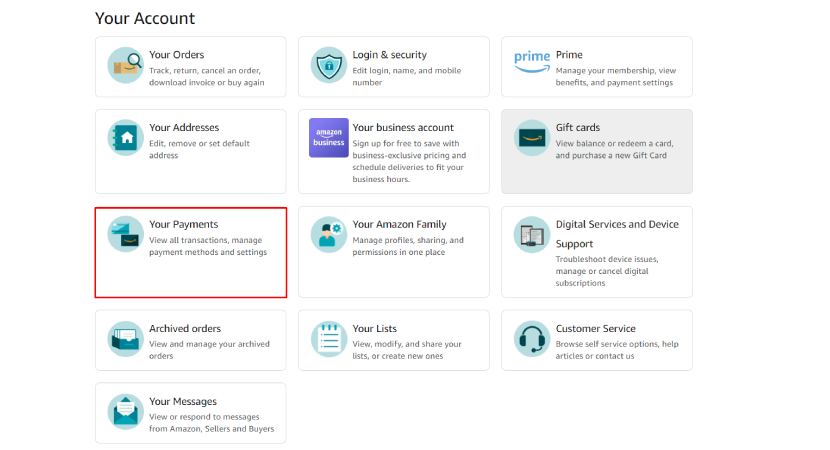
Step 4 - Click on Add payment method.
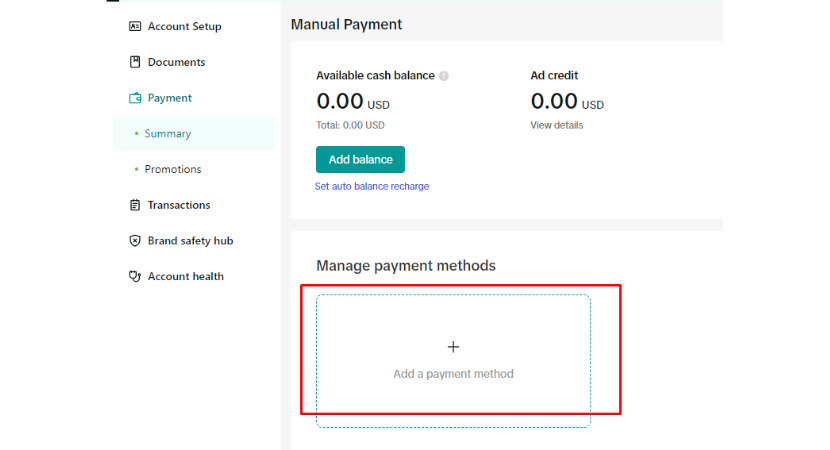
Step 5 - Select to add a credit or debit card.
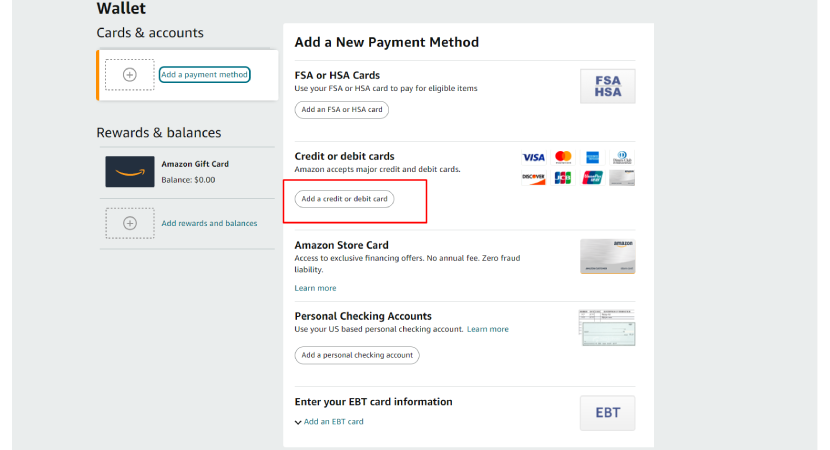
Step 6 - Fill in your PlasBit virtual card details, then click Add your card.
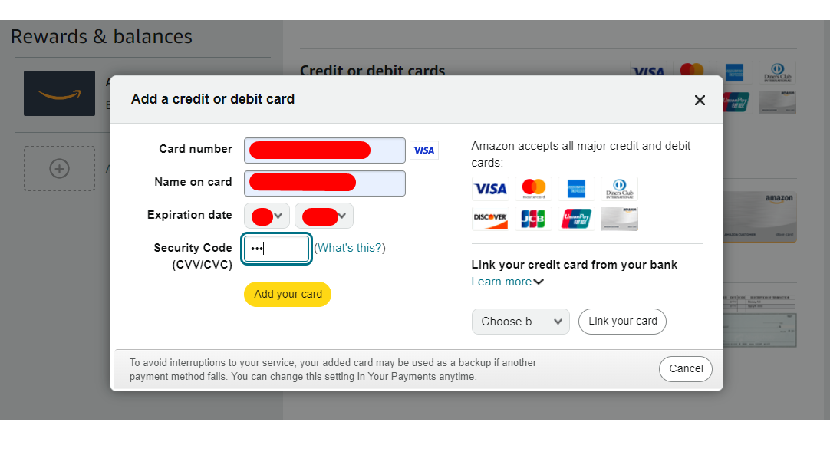
Step 7 - Fill in your complete address for shipping or billing
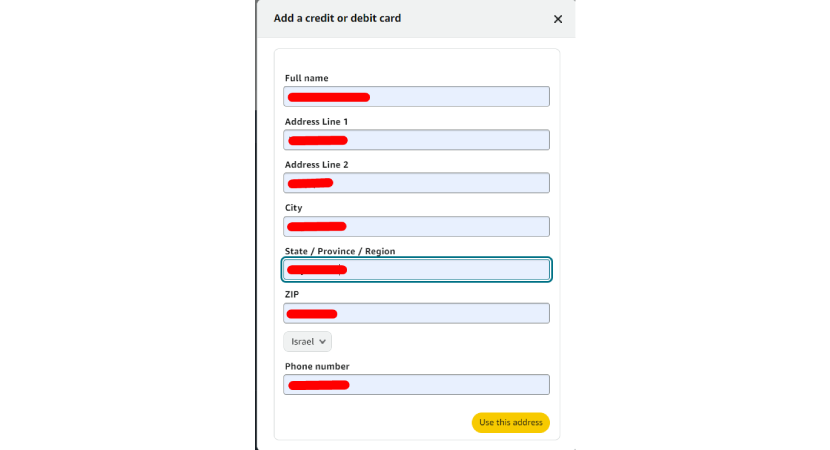
Step 8 - Check the information on the card that was added to your Amazon account
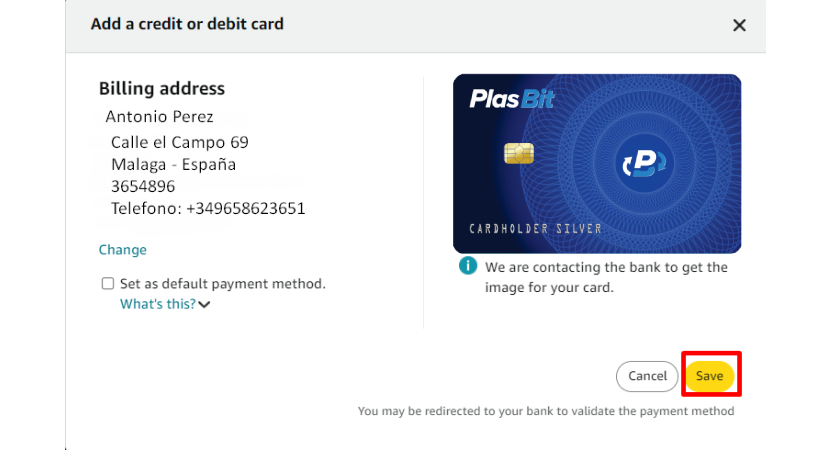
Why would you want to use crypto to pay for Amazon purchases?
There are a few potential reasons why a buyer might prefer to use cryptocurrency instead of traditional fiat currency for purchases on Amazon:
- Privacy - When using crypto, the buyer's personal financial information is not shared with the merchant or stored in centralized databases. Privacy appeals to those who want to keep their purchasing habits private.
- Lower Transaction Fees - Cryptocurrency transactions often have lower fees than credit card processing or bank transfer costs. This could potentially save money on larger purchases. International buyers could avoid currency conversion fees and potentially unfavorable exchange rates by paying directly in cryptocurrency rather than converting their local currency. This could result in cost savings, especially on larger purchases.
- Faster International Transactions - Cryptocurrency transactions are typically settled within minutes. International buyer payments can be processed much quicker than conventional cross-border payments.
- Increased Accessibility - Cryptocurrencies could provide access to Amazon's marketplace for the estimated 2 billion people worldwide who lack access to traditional banking services. This would open up new markets and demographics for Amazon.
- Standardized International Rates - A standardized cryptocurrency accepted by Amazon could allow shoppers to purchase goods at a consistent international rate, eliminating confusion and volatility associated with fiat currency exchanges.
However, Amazon does not currently accept cryptocurrency payments directly. Buyers would need to use third-party services or crypto-backed debit cards to make purchases with crypto on Amazon. In the previous section of this article, we explained how to pay for Amazon using crypto with a Plasbit virtual card loaded from a crypto wallet.
Amazon and crypto
In 2014, the company's representatives said that they did not see any desire of its clientele to pay with cryptocurrencies and thus stayed away from venturing into the industry. That was the last statement Amazon ever made about accepting payments in any cryptocurrency.
Why Amazon doesn't accept crypto
Without any further statement from the company, several analysts have discussed possible reasons behind Amazon's decision. These are the main reasons they quoted:
- Volatility - Cryptocurrencies are known for their price volatility, which could create challenges for pricing and accounting. The rapid fluctuations in value make it difficult for a large retailer like Amazon to manage transactions and maintain stable pricing.
- Regulatory uncertainty: - The regulatory landscape for cryptocurrencies is still evolving in many countries. Amazon operates globally and must navigate complex and potentially conflicting regulations across different jurisdictions.
- Transaction speed and scalability - Many cryptocurrencies have processing speed and scalability limitations. For example, Bitcoin can only handle about seven transactions per second, while Ethereum manages fifteen per second. Both limits are far below Amazon's peak of 600 transactions per second during major sales events, and they could pose challenges for Amazon's high-volume, fast-paced e-commerce platform.
- Security Risk - The irreversible nature of cryptocurrency transactions means fraudulent payments cannot be easily reversed or canceled. Bad actors could exploit this lack of chargeback options.
- Customer Protection - Cryptocurrency transactions are typically irreversible, which could complicate Amazon's customer-friendly refund and return policies.
- Integration Complexities - Implementing a cryptocurrency payment system across Amazon's vast infrastructure would require significant technical resources and could introduce new security risks.
- Environmental concerns - Some cryptocurrencies have faced criticism for their energy consumption and environmental impact, which may not align with Amazon's sustainability goals.
- Market Readiness - Despite growing interest, cryptocurrencies are still not widely adopted for everyday transactions, potentially limiting the benefit for Amazon compared to the costs and risks involved
- Control - Amazon prefers maintaining control over its payment systems and customer data. Accepting cryptocurrencies could potentially reduce this control.
- Reputational Risk - Given the association of some cryptocurrencies with illicit activities, Amazon may be cautious about potential reputational damage.
- Competition – Amazon's size and turnover may justify introducing its own cryptocurrency once the ecosystem matures and regulations become clearer.
While Amazon has not directly integrated cryptocurrency payments, it's worth noting that the company has shown interest in blockchain technology and digital currencies. They have been exploring related technologies and may adapt their approach as the cryptocurrency ecosystem evolves.
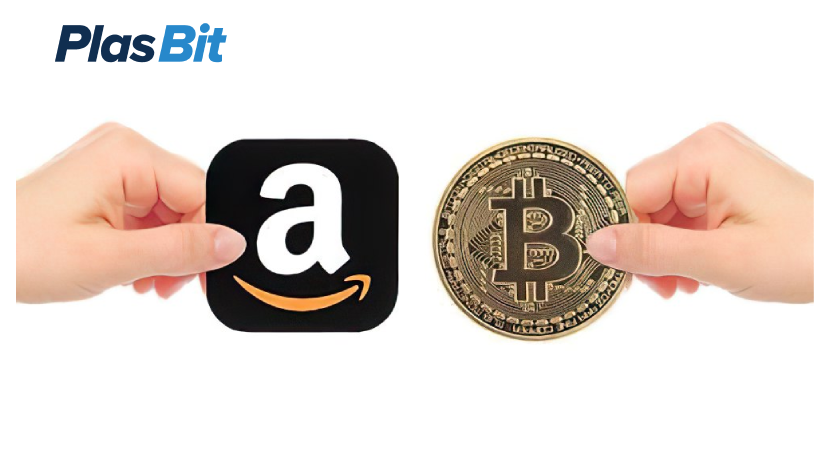
Should Amazon accept direct crypto-payment?
The decision to accept crypto payments would require Amazon to weigh the potential benefits against the challenges and align it with its long-term strategic goals. The advantages would be :
- Increased Payment Options - Accepting crypto would give customers more flexibility in choosing a payment system, potentially attracting new customers who prefer using digital currencies.
- Reduced Transaction Fees - Cryptocurrency transactions often have lower fees than traditional payment methods, which could reduce Amazon's costs.
- Market Leadership - As a tech giant, adopting crypto payments could position Amazon as an innovator in the e-commerce space. Potentially, it could increase customer loyalty among tech-forward consumers.
- New Customer Segment - Amazon could attract crypto enthusiasts and early adopters who prefer using digital currencies for transactions.
- Global Accessibility - Cryptocurrencies could make it easier for international customers to purchase from Amazon without dealing with currency exchange fees or restrictions, potentially expanding Amazon's global reach.
- Prime Integration - Amazon could integrate cryptocurrency with its Prime program, offering exclusive benefits or discounts to enhance customer loyalty.
Amazon has shown interest in blockchain technology, launching Amazon Managed Blockchain for Web3 applications. There are also rumors that Amazon is potentially developing its digital currency. These factors could influence the company's stance on accepting cryptocurrencies in the future.
Can Amazon be hacked?
With millions of user accounts directly linked to active credit cards and incredible global reach, Amazon is a potential gold mine for hackers.
Once hackers gain access to your Amazon account, their first move is often to change your login details. This step makes it harder to regain access to your hacked Amazon account. Thankfully, Amazon offers two-factor authentication. If you have 2FA activated and there's an attempt to breach your account, the hacker will also need access to your phone to get a passcode. However, if you are a victim of a SIM card Swap, the hacker gains control of your phone.
Once the hacker gets hold of your login details and can control your telephone (if you have an SMS as a second-factor authentication), they can buy anything and ship it anywhere. The item will be charged to your default payment system.
A hacker can get hold of your details in several ways:
- Hacked email accounts - If a hacker gains access to the email address linked to your Amazon account, all they need to do is request a password reset. Amazon will send a reset link directly to the email account over which they have control. A hacked email account is a significant vulnerability for all online accounts, not just Amazon. Plus, a scammer would have access to much of your personal details and could use them in many ways, for instance, selling it on the dark web.
- Phishing emails - Hackers also send mass Amazon fraud email campaigns that operate as phishing schemes. They'll send a fraudulent email impersonating Amazon, hoping you'll give up personal information or click links that lead to phishing sites. These scams are astonishingly convincing, and you may not even know an Amazon fraud email scam has targeted you. There are ways of spotting an Amazon phishing scam: poorly written emails, strange language, linked websites that are not actually Amazon but look deceivingly close, such as "Amozon" or "AmazonShop.", and the email coming from an address that is not @amazon.xxx.
- Automated password cracking – A hacker uncovers plaintext or unscrambles hashed passwords stored in a computer system. Password cracking tools leverage computing power to help a hacker discover passwords through trial and error and specific password-cracking algorithms. Create strong and unique passwords; they could prevent your Amazon (or any other account) from being hacked. Automated password crackers guess a combination of common keywords and numbers until they crack the code. You need to avoid:
- A commonly used word or phrase
- Something that includes your personal info (e.g., your birthdate)
- A password used on multiple platforms
A hacked password may lead to identity theft, being locked out of your accounts, hacking other passwords, spyware installed on your devices, or your data being sold to data brokers.
- Data dumps – Data breaches happen very frequently. All websites can potentially be hacked, and if one is successfully hacked, your login credentials could be sold to other bad actors or used to hack into your other accounts. For instance, if your Facebook account gets hacked, all your accounts may be vulnerable.
- Keyloggers - Once a keylogger infiltrates your device, it tracks all your keystrokes and remotely sends this data to the hacker. If you access Amazon while a keylogger is recording, you've sent your account details and password directly to the scammers. Some signs may indicate a keylogger on your computer:
- Unusual lag or delays when typing or moving your mouse cursor.
- Decreased device performance or high CPU usage
- Unidentified applications installed on your device
- Unusual network traffic may indicate a keylogger sending data to a remote server. Use network monitoring tools to check for suspicious connections.
Using a reputable antivirus program is one of the quickest and most effective ways to detect keyloggers.
Amazon Competitors
Amazon is a global company that faces significant competition across various markets. We have discussed how to pay for Amazon using crypto; what about its competitors?
Amazon vs. eBay
Amazon and eBay are two of the largest e-commerce platforms but differ significantly in their business models, product offerings, and seller experiences. Amazon operates as a hybrid retailer and marketplace, selling products directly to consumers and allowing third-party sellers to list items. eBay functions purely as a marketplace, providing a platform for individuals and businesses to sell directly to consumers without competing with the platform itself.
Amazon may be better suited for high-volume sellers of new, branded products; at the same time, eBay could be more advantageous for sellers of unique, used, or collectible items who value flexibility and control over their listings.
eBay does not accept direct crypto payments.
Amazon vs. Walmart
A major physical and online retail player, Walmart has aggressively expanded its eCommerce presence through Walmart Marketplace and Walmart Fulfilment Services (WFS). It is considered one of Amazon's strongest rivals in North America due to its extensive store network and logistics capabilities
Walmart filed trademarks in late 2021, indicating it's working on a digital currency and token of value. Walmart also piloted a program in some U.S. stores where shoppers could buy Bitcoin at Coinstar kiosks. However, they do not yet accept direct crypto payments.
Amazon vs. Alibaba
This Chinese giant operates several platforms, including Taobao and Tmall, catering primarily to the Asian market. Its vast product range and competitive pricing strategies make Alibaba a formidable competitor.
Amazon is better suited for businesses selling directly to consumers, especially in Western markets, while Alibaba is ideal for companies seeking to source products or engage in wholesale transactions, particularly from Asian manufacturers.
In 2017, Alibaba launched its own cryptocurrency mining platform, P2P Nodes. However, in 2021, they banned the sale of crypto mining platforms from their stores. That decision matched China's broader crackdown on cryptocurrency-related activities. Jack Ma, the founder of Alibaba, has described Bitcoin as a bubble, suggesting that his company will not use the world's largest cryptocurrency by market cap for payments at any point in the future.
Amazon vs. Temu
Amazon offers a vast selection of products across numerous categories, including both well-known brands and lesser-known options. Their inventory spans everything from electronics to everyday items, catering to a wide range of consumer needs.
Amazon has built a strong reputation for product quality and authenticity over its long history. The platform employs strict measures to ensure product authenticity, leading to a higher level of consumer trust
Temu, on the other hand, focuses more on offering ultra-low-cost products, often sourced directly from Chinese manufacturers
This direct sourcing allows Temu to offer significantly lower prices than Amazon. However, Temu's product range tends to feature more unbranded or generic items
Temu's ultra-low prices sometimes raise questions about product quality and authenticity. Some customers have reported receiving items that don't match the product descriptions.
At the time of writing this article, the platform called Temu does not accept direct payment with cryptocurrencies. The cryptocurrency called TEMU has no apparent connection with the platform Temu.
Amazon vs. Flipkart
Flipkart dominates the Indian market, offering a business model similar to Amazon's, including a loyalty program called Flipkart Plus. Walmart acquired a majority stake in Flipkart, further strengthening its competitive position in India.
Amazon entered the Indian market after Flipkart but has quickly grown to become a major player. As of 2021, Flipkart commands an impressive 48% market share, significantly outpacing Amazon's 26%, a notable shift from 2018 when the two companies were neck and neck with around 31% market share each.
Both platforms offer clean, intuitive layouts prioritizing user-friendliness. Amazon's interface is globally standardized, providing familiarity to users of its international platforms. Flipkart, however, brings a more localized touch with language options and a colorful design that resonates with Indian culture.
Flipkart does not accept direct payment with cryptocurrency.
Amazon vs Rakuten
Based in Japan, Rakuten provides a unique shopping experience with its loyalty program and has a strong local presence that competes closely with Amazon Japan. The two companies are neck-and-neck in terms of popularity in Japan, but they have distinct approaches.
Amazon manages most aspects of the e-commerce ecosystem, including inventory, logistics, and customer service on behalf of brands. It offers a consistent, streamlined design that is familiar to users worldwide.
Rakuten operates as a partnership platform, allowing brands more control over inventory, logistics, and customer interactions. It provides a more varied user experience, tapping into the Japanese concept of "omotenashi" (exceptional hospitality and service). It offers a loyalty-based membership program.
Rakuten allows its customers to load yen into their Rakuten wallet using Bitcoin, Ethereum, and other crypto, converting them into yen for free. Strictly speaking, they do not accept direct crypto payment but operate their own indirect payment system.
Buying a gift card using cryptocurrency.
It is possible to buy gift cards for purchases on all the platforms listed above from specialized websites. A gift card is not as flexible as a reloadable card. You cannot reload it; therefore, you risk leaving small amounts on the gift card.
More than an indirect way to pay with crypto
A Plasbit virtual card offers more than an indirect way to pay with crypto. There is a strong argument for using reloadable cards for your online purchases. Data leaks happen, and if a hacker gets hold of the details of your reloadable card (whether real or virtual), its balance is the most you stand to lose. The rest of your money is not affected; your bank account is safe, and your personal details are protected.
In the future, Amazon and other major e-commerce platforms may or may not accept direct crypto payment; however, there will still be advantages to using indirect methods. As discussed above, data leaks happen, and using a reloadable card offers greater protection.
Last but not least, if you hold more than one cryptocurrency, you can use a mix of all the crypto in your wallet to load your virtual card, one crypto at a time.




